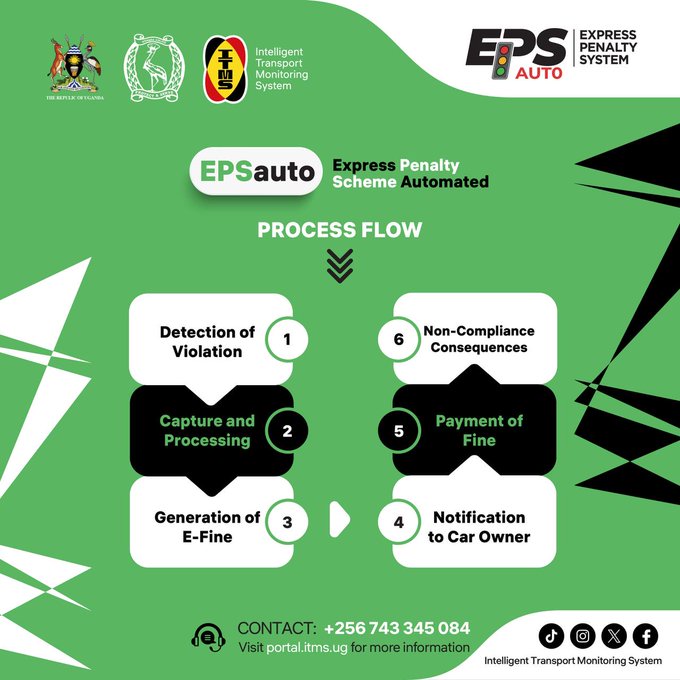As the Electronic Penalty System (EPS) rolls out nationwide, the Ministry of Works and Transport, together with the Intelligent Transport Monitoring System Uganda (ITMS), has issued a clear directive to the public on where different speed limits apply and the corresponding penalties for violations.
According to the Ministry, the move is part of a broader effort to curb road crashes, 44.5% of which are attributed to speeding, as reported in the 2024 Uganda Police Annual Crime Report. In 2024 alone, 25,107 road crashes were recorded, resulting in 5,144 fatalities — many of them preventable.
Speed Limit Zones Clarified
Winston Katushabe, Commissioner of Transport Regulation and Safety at the Ministry of Works and Transport, clarified the speed limits.
He said 30 km/h will be enforced in residential areas, near schools, hospitals, and busy markets where pedestrian traffic is high, while 50 km/h applies to urban centres and most highways within towns.
“80 km/h is set for expressways, where traffic is faster but still regulated, and 100 km/h is the maximum limit for designated expressways, where road design supports higher speeds,” he noted.
Contrary to some public misconceptions, the 30 km/h limit is not universal — it only applies to areas with high human traffic to protect vulnerable road users, especially children and pedestrians.
“In light of feedback received from various stakeholders regarding the implementation of the Automated Express Penalty System, particularly on speed enforcement and red-light violations, the government is reviewing these views and will provide guidance on the next steps in due course,” said the ministry on X.
Fines for Speeding
The EPS system, now live, utilises Automated Number Plate Recognition (ANPR) cameras to detect and penalise speeding and red-light violations in real-time.
Based on current enforcement protocols, exceeding the speed limit by 1–30 km/h results in a fine of UGX 200,000, while exceeding the speed limit by 31 km/h or more will attract a UGX 600,000 fine.
These fines are automatically generated once the system detects a violation near speed-regulated zones or road signage.

Automated Enforcement in Action
The Ministry has confirmed that the EPS-Auto system is now active on major roads and intersections countrywide. The cameras are programmed to read and interpret road signage, ensuring that speed limits are enforced accurately based on the vehicle’s real-time location.
“Drivers must be alert and aware of road signage at all times. The cameras are smart — if you’re over the limit near a hospital, school, or residential area, the system will catch it,” said ITMS officials in a statement on X (formerly Twitter).
Drive Safe, Avoid Penalties
The Ministry is urging motorists to adhere to posted speed limits and traffic signals. “Speeding is among the five major risk factors contributing to road crashes. Respect the rules of the road. Avoid penalties. Save lives,” reads a public advisory issued by the Ministry.
“In the meantime, we urge all road users to continue observing traffic regulations. The implementation of the system REMAINS in EFFECT as efforts to improve road safety continue.”
With the EPS system now fully operational, Ugandan motorists are being reminded that compliance is no longer optional — it’s being monitored, recorded, and enforced in real-time.









